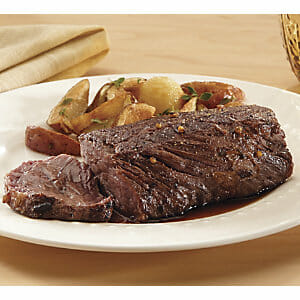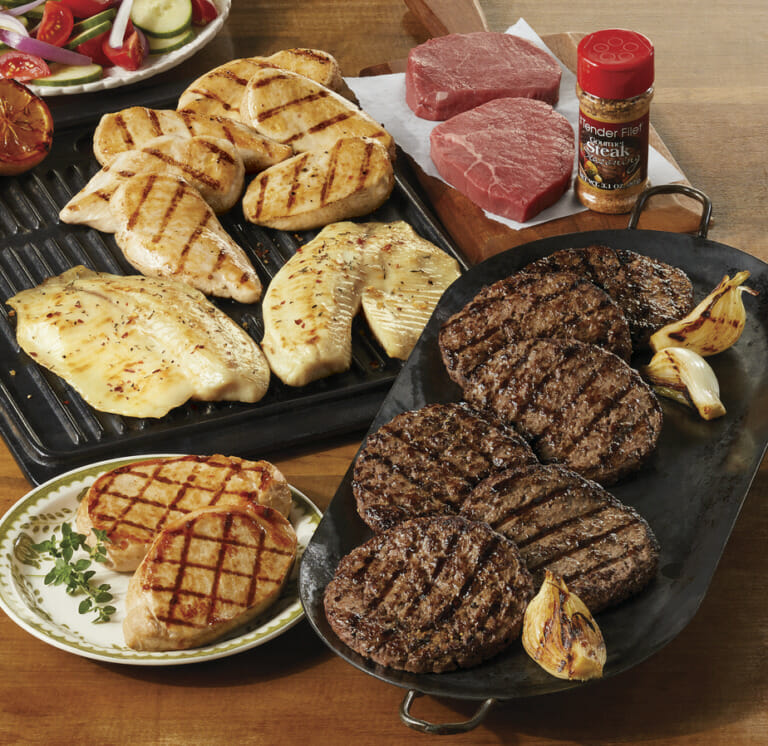Grilling 101: Grill vs. BBQ/Steak Basics
What is the difference between grilling and barbecuing? How do you grill a steak? Get expert grilling tips to help you cook the best steak possible.
So you’ve got yourself some restaurant-quality steaks and you’re having friends over for a backyard barbecue…or are you? In reality, most people would never barbecue a steak. (But stick around, and we’ll teach you how to cook a steak properly.)
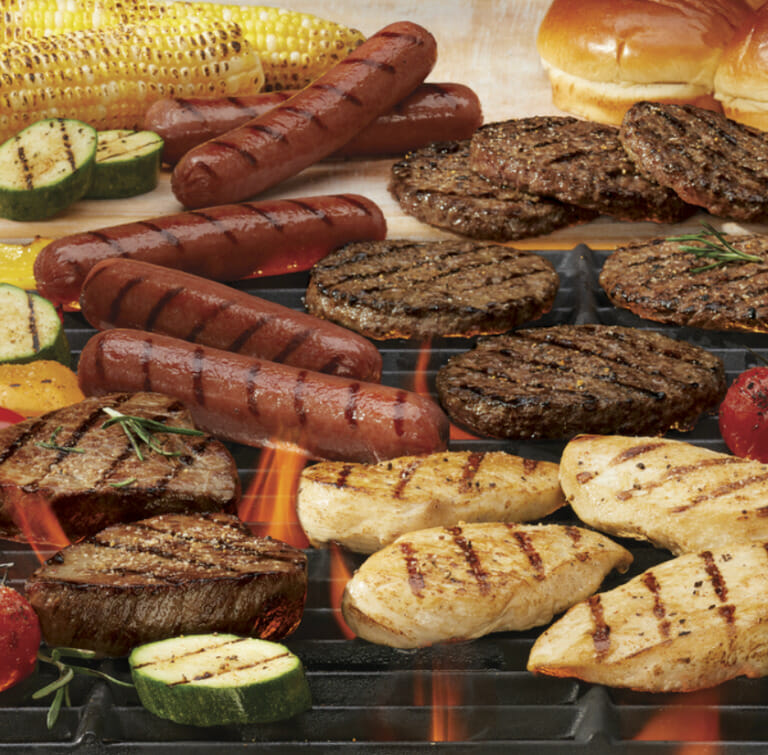
What is the difference between grilling and barbecuing?
Depending on where you live, you hear people talk all the time about “backyard barbecuing”…when what they usually mean is grilling. So what’s the difference? While the same outdoor cooking apparatus can be called either a grill or a barbecue—again, depending on where you live—the actual cooking techniques known as grilling and barbecuing are very different.
Grilling is done over direct heat, with the food typically just inches above the heat source. The heat is usually high (like 500 degrees F or hotter), and cooking time is generally short. The reason we use words like typically, usually and generally is that there are exceptions, as we will soon see.
Grilling is usually done on a gas grill or a charcoal grill (either of which is often called a barbecue, hence the confusion). It can also be done over an open fire, but for now we’ll concentrate on the typical equipment found in the typical American backyard.
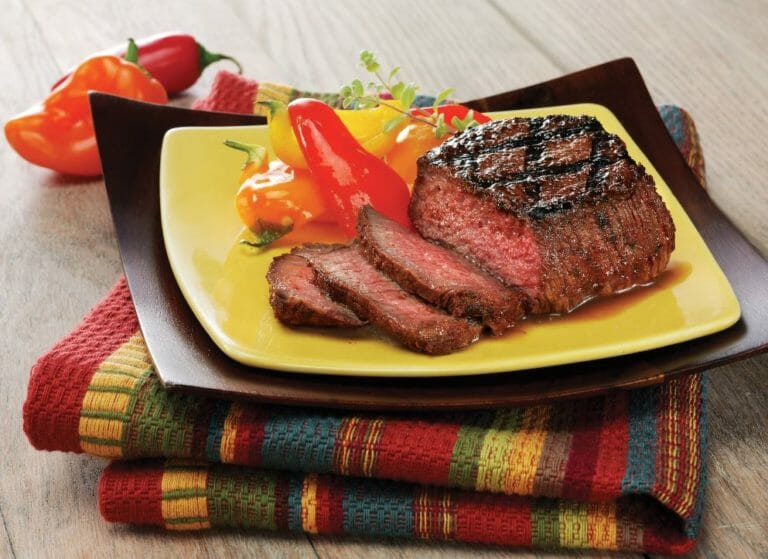
This direct-heat technique is appropriate for tender cuts of meat that benefit from quick cooking, creating a flavorful sear on the outside while leaving the inside tender and juicy. Prime examples are beef rib steak, loin (strip) and tenderloin (filet). It’s also perfect for hamburgers, since the otherwise tougher cut of beef has been ground to tenderize it. Other candidates for grilling include pork chops, hamburgers and hot dogs. Grilled seafood is also fantastic.
Meats such as pork tenderloin or chicken can be cooked over direct heat, but lower heat needs to be used to ensure that the center is thoroughly cooked while the outside doesn’t get too blackened. This is easily achieved by turning down the burners on a gas grill, or by using indirect heat.
For indirect-heat grilling, turn off one or two burners on a gas grill, or push the coals in a charcoal grill to one or both sides (they make special racks for this) so food can be grilled without resting directly over the heat source. This method is perfect for large pieces of chicken (or whole birds), beef or pork ribs, pork loin and beef tenderloin. The heat is lower, and the cooking time is slower…but it doesn’t approach what we truly call barbecue.
Barbecuing is cooking low and slow: low heat (225 degrees F or lower) for a long time (hours, or even all day). And it can’t easily be done on what many people call a barbecue. To achieve the low temperatures needed for barbecuing, the heat source is often in a separate chamber from where the meat is being cooked…although there are “bullet smokers” and ceramic egg-shaped devices in which the food sits well above the heat source and cooks more slowly. (With adjustable racks, these can also double as grills.) Charcoal and/or wood chunks can be used as fuel, and some smokers use electricity and wood chips. Despite all the spices that can be used in the process, hardwood smoke is the primary flavor in barbecue.
Meats that are usually barbecued include pork shoulder (aka Boston butt, used for pulled pork), beef brisket, and whole chickens or turkeys. Pork ribs and chicken thighs, while also candidates for indirect grilling, are also popular for low-and-slow barbecuing; in fact, the four basic meats in competition barbecue are chicken thighs, baby back pork ribs, pork shoulder, and beef brisket. Pork shoulders will often cook between 8 and 12 hours, while briskets can go 12 hours or more.
Here’s an excellent example of how different barbecuing is from grilling: In grilling, you don’t want to cook a steak beyond a certain temperature, or it becomes tough. In barbecuing, however, meats are cooked beyond even the recommended temperatures for well-done. Why? The tough cuts of meat used in low-and-slow cooking contain a lot of collagen, which is found in connective tissue. Collagen begins to melt at around 160 degrees F and break down into rich gelatin, which gives the meat deep flavor and silky texture. This, together with the savory smoke flavor, is what defines barbecue.
So what about the sauce?
Barbecue sauce does not make something barbecue—low and slow cooking does—and, in fact, it can be used for both barbecuing and grilling. It is basically just a finishing sauce, and is only one of a number of flavor techniques favored by grillers and barbecuers. Whether you’re grilling or barbecuing, be sure to master these ways of flavoring and tenderizing meat:
How to Marinate Steak and Other Meats
Dry Rubs for Ribs and Other Meats
Now about that steak…
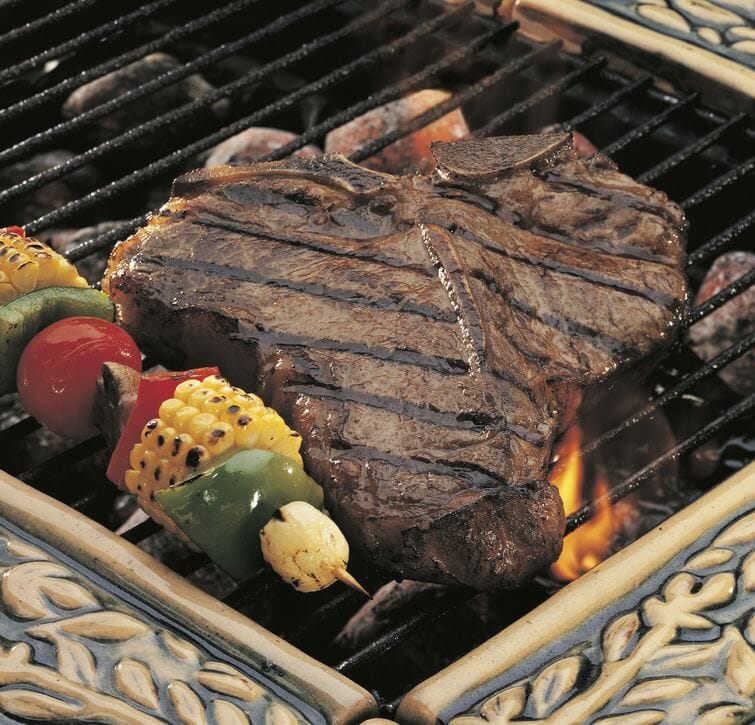
How Do You Grill a Steak?
Light grill. If you’re cooking with gas, set the burners to high and close the lid. If you’re using charcoal, don’t skimp on it: use a full chimney of briquets or chunks. For steaks, you want serious heat. When the coals are ready (mostly covered with white ash but still glowing) or the gas grill is preheated to the top range of the thermometer, you’re good to go.
Create a two-zone fire by turning off one gas burner or pushing all of the coals to one side of the grill. This is important, because while you want high heat for a good sear, you need a fire-proof zone where you can move your steak in case of flare-ups or if it’s well seared but not yet done. (This can happen, especially with thick steaks.)
Prep steak. 20–30 minutes before grilling, remove steaks from the refrigerator and let them come to room temperature. Trim any excess fat to avoid flare-ups. Season liberally. Coarse salt and freshly ground pepper are great; steak seasoning is even better.
Oil the grill. Just before grilling, pour cooking oil on a folded paper towel, grasp with long-handled tongs and swab the grate to keep steaks from sticking. (If you’re more comfortable brushing oil on the steaks instead, do this before seasoning.)
Cook! Place the steaks on the hottest part of the grill and let sear 3 or 4 minutes. To get nice grill marks, don’t move the steaks unless you have flare-ups. Turn the steaks over and grill another 3 or 5 minutes, then move to the warm side (not over the coals) and close the lid until steaks are done. Use an instant-read thermometer to check for your desired doneness: 135 degrees F for medium-rare, 140 degrees for medium, 150 degrees for medium-well, or 160 degrees for well-done.* Keep in mind that the temperature will rise a few more degrees after removal…
Rest steaks. Remove steaks from grill, place on a cutting board and cover loosely with aluminum foil. Let them rest for five minutes, during which time the juices will reabsorb into the meat. You are now ready to enjoy perfectly cooked steaks.
*Note: The United States Department of Agriculture (USDA) recommends that whole cuts of meat be cooked to at least 145 degrees and rested for three minutes.

